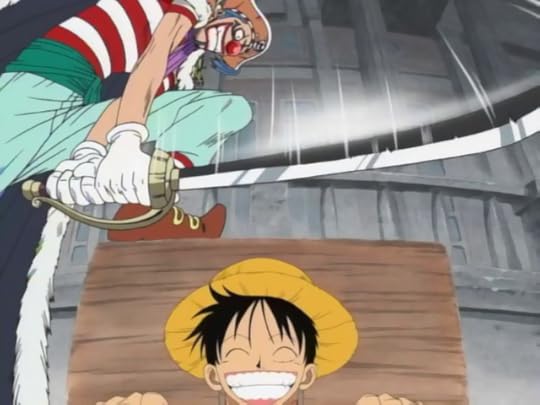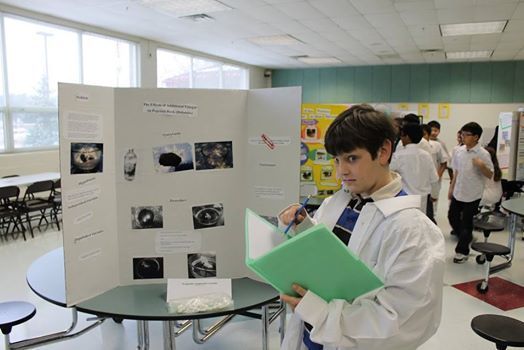L. Jagi Lamplighter's Blog, page 36
April 9, 2014
Wright’s Writing Corner: Spock vs. Elf – An Author’s Dilemma
I have been wanting to write about this for quite some time. Today seems like the day.
It has come to my attention that there are two kinds of readers when it comes to reading about emotions. (There may be more, but I’ve only discovered two of them.)
The first one, I shall call the Spock Reader. The second I shall call the Elf Reader.
Spock Readers distain shows of emotion. Many men fall into this category, but I know some women who say the same thing. To them, emotion is barbaric, and calmness is a sign of advancement. Characters who show emotion are immediately dismissed as either feminine or weak. Cool-headed, collected characters are to be admired.
The characters admired by the Spock Reader embody the best of humanity—mankind’s ability to rise above the primitive and resist the animal passions, the triumph of the intellect.
Elf Readers are the opposite. They live in a world where only the most highly-discerning are swept away by strong emotions, while the masses are callous and unfeeling—incapable of appreciating what is truly there. The Elf Reader, to quote my dad’s favorite line from the Hindu Bhagavad Gita: "burns with the bliss and suffers the sorrow of every creature”. Characters who show deep emotional reactions reach them. Cool, emotionless characters seem stiff and lacking.
The characters admired by the Elf Reader embody the best of humanity—mankind’s ability to emphasize with others, our love of art, of beauty, of music, of the things that touch the soul.
To the Spock Reader, an ideal character to read about might be a soldier who never loses his cool even in the heat of battle. Detective books and thrillers often have such characters. Spock himself is such a character.
To the Elf Reader, an ideal character might be a lonely young girl, perhaps with a cruel stepmother, who suffers because of her intelligence and compassion allow her to experience so much more than the uncaring people around her. Books for teens and romances often have such characters.
Which brings us to the author’s dilemma: which character do we put in our books?
Because, folks, we can’t do both at once, make our characters both cold as ice and hot as flame.
Or can we?
There are characters who appeal to both groups. Spock himself is a good example. The Spock Readers love his logic. The Elf Readers love his ears…er…I mean, his struggle with his human side, the emotions he attempts to control. In this one character, both readerships can find something to relate to. (I would say empathies with, but that’s Elf Reader talk right there.)
But then some viewers found Spock cold and preferred Bones, with his warmth and compassion, or Kirk, with his ability to make us feel that he really saw and appreciated what was best in human beings.
And yet, not every story can carry both kinds of characters. Books that cater to one of these readerships run the risk of losing all their readers if they try to cater too much to the other readership at the same time. Readers who love James Bond are often not the same ones who love Jane Eyre and Wuthering Heights. The audience of the Bourne Identity are often not the ones found waiting at the bookstore at midnight with their roses and ballgowns for the next Twilight novel.
So…how does an author decide how far to go? How much should our elf burn with the bliss and suffer the sorrow of all mankind? How icy should our Vulcan be? If we go to a farther extreme, will we gain more loyalty out of our desired readership? Or just lose the middle ground reader who now finds our characters too emo or too cold.
What is your preferred reading style? Where do you like authors to draw the line?
April 8, 2014
Overheard at the Wright Household
"Thinking outside the box is not a problem in this family. FINDING the box is the problem."
Justinian Oberon Wright on: Time Travelers’ Parents
"Time travelers' parents never say: Be back by six. They just say: When you're done, get home at six."
"Time travelers' parents never say: Where have you been! …
They say: When have you been?"
"Time travelers' parents never say: Get back this instant!
They say: Get back to this instant!"
It has been brought to my attention that somehow the Winn...
It has been brought to my attention that somehow the Winner for the Llama post did not get posted. So, posting again!
Best caption:
Tibet or bust!
April 7, 2014
Guest Post at Mythical Monday
I was invited to do a guest post for Mythical Monday, here is an excerpt and a link:
Of Gnomes and Oreads: the Magic of the Mountain
Mountains. They rise like majestic kings, white-crowned with robes of royal purple and deep blue. The air atop them is different from ordinary air. To be atop a mountain is to breathe magic. One cannot blame our earlier generations for believing that they were full of mythical creatures.
Heck, some mountain dwellers believe that today!
Some of my best childhood memories of magic involve mountains. My family used to spend two weeks during the summer in the White Mountains in New Hampshire, possibly the most magical place in America. One could hardly hike the evergreen-studded slopes without feeling the hush of enchantment.
The locals all believed in magic—or at least in the spirit of it. They told us stories of the spruce trolls who dwelt on the mountainsides, and when you drove under overpasses, you were instructed to knock on the ceiling of your car to honor the trolls who lived under the bridges. Otherwise, they would come at night and play tricks on you.
But the greatest magic of all—which still remains with me today, decades later—was my very first glimpse of mountains themselves.
Read more
Caption This!
Caption This Winner!
We received several versions of this same idea, so it is definitely the winner:
Iron Man, Iron Throne
But special runner up status to:
The new CEO decided to go with a more old-fashioned style of furniture.
April 2, 2014
Wright’s Writing Corner: The Most Important Technique (Payload Moment Reboot–Part Two)
Last week, we discussed the Payload Moment—the moment that lifts or deepens a given scene or character. This week, I promised to discuss how to do this.
But first…a confession.
In Gone With The Wind, the little slave girl Prissey declares boldly that she has helped women give birth many times. But when the moment of truth comes and the baby's arrival is eminent. she cries out, in one of the movie's most famous lines: “Miss Scarlett, I don’t know nothing ‘bout birthin’ babies!”
This is my moment of truth…and, Folks: I don’t know nothing ‘bout birthing payload moments!
Or, rather, I have no idea how to teach someone else to do it. But, like Prissey, faced with the immediacy of Miss Melly’s baby coming, I will run, grab some hot water and towels, and see what I can improvise.
To write a payload moment, you gather the threads of the scene together in your mind, juxtaposition them so that they are taught as a tightrope, and then torque ‘em a bit, until something pops up, and that is your payload moment.
And if you can understand what I meant from that description, you did not need to read this article to begin with.
Okay, more seriously now: writing, like art, is all about contrast. Adding shading to a circle makes it look like a sphere. Adding contrast to a written scene makes it feel three-dimensional, or "real". Contrast in character makes the character come alive. Contrast in a scene makes the scene move.
I have talked before about how two things must be going on in any scene. Otherwise, the scene is static. It might be funny, or romantic, or scary, but, unless there are two separate issues going on during the scene, there is something stolid and undynamic about it—Your tightrope is limp. No one’s walking on it three inches above the floor, much less at thirty feet.
The tension between two issues—whatever they might be: plot and character development, two plot issues, character tension and humor, romance and terrot, the list goes on and on—is what produces the contrast that makes the scene come alive.
But a scene coming alive and finding its Payload Moment are two different animals. A living scene is enjoyable and interesting to read, but that is not enough to make it necessary to the story. The Payload Moment is the moment when the scene becomes utterly necessary, when something changes, so that the story is different afterwards from what it was before.
Finding the Payload Moment is to writing what finding the punch line is to humor. The punch line in a three-line joke is the moment when the contrast set up in the first and second line comes together in an unexpected way. It is the unexpectedness that makes it funny (even if you think—Oh, I should have seen that one coming!)
The Payload Moment is that instant when the ideas in a scene come together in an unexpected way. (That torqueing I mentioned above.) It takes something we already know and shows us another side of it. Often, it brings out something that "we should have seen coming" but that we did not expect.
Let us take a closer look at the scene from One Piece that I mentioned last week.
The pirate Buggy the Clown has trapped our hero, Monkey de Luffy, on top of a platform. Luffy had climbed the platform because—22 years before—Gol d. Roger, the King of the Pirates, was executed there. Luffy wanted to see the place where his hero died. Buggy—being a pirate—decides to kill Luffy with his cutlass. He raises it to cut off Luffy’s head…and is struck by lightning
This did not come entirely out of the blue (sky). Several people had stopped to comment on the weird weather.
For those who do not know this story—or who have been turned off by how astonishingly, freakily weird everything looks—Luffy is a boy who has declared that he will be King of the Pirates. (This even though he is less pirate-like than you are. And I write that with some confidence, even though I do not know who will be reading this.) Luffy has eaten a Devil Fruit, so his body is made of rubber. This is very useful against many things…but it does not protect him from sword blades.
The lightning bolt that saves him is not the Payload Moment. Or rather, it could have been the Payload Moment, since it was properly set up, had the scene ended there. However, it would have been a lesser moment than what follows.
The Payload Moment comes when the Navy man, Captain Smoker, who is looking across the square at the event, sees Luffy the moment before the lightning bolt—the moment before Luffy is to die. As you can see from the picture, Luffy is smiling…just the way Gol d. Roger smiled when he was executed…a sight Smoker remembers from when he was a child. Smoker, who had been relying on one pirate to rid him of another (He is not aware that Luffy is a good guy, only that there is a bounty on his head.) is shocked. He pauses to wonder if the heavens, destiny itself, is on the side of this young man.
Now…we the viewers know that destiny is on Luffy’s side. He is the main hero. He is utterly brave. He has the hugest heart ever, and he is nigh invulnerable–except to sword blades. We have also seen him do impossible things and be surprisingly lucky. But nothing before this indicated that the universe Luffy lives in thought destiny was on his side. Drawing the implications of this into the story increases the scope…it hints that Luffy might be destined for something more important than just one boy carrying out his dream, something that will affect his entire world.
Discovering that the heavens have an interest in your character is a big Payload Moment, but payload moments don’t have to be so big. They can be small things, a sudden reevaluation of a character, where we see her motivations in a new light.
It can be a plot twist…Garlot’s not dead!
It can be a romantic realization, when a sudden zing leads the heroine to recognize her true love.
Or it can be melodramatic. “But it is my fault!“
In each case, however, it has to be something that illuminates either the character, the plot, the background, or—as in our scene with Luffy—the greater universe.
When you sit down to write, what you have to ask yourself is: what can I put in this scene that will take what I have already established and build on it. What action, revelation, or interpretation will make the reader go “ah!” or “oh, of course!” or even “oh, no!”
What makes me so bursting with desire to tell someone this idea that I have to either write the scene right this second, or go call my best buddy and tell him the idea? (Go for one! If you do two, you might lose the "must write this" drive.)
That is your Payload Moment.
If you prevail, your manuscript will gain depth and dimension. It will gain life. And, like Prissey, at the end, you will be able to smile with pleasure at the dynamic thing you just helped to birth.
Professor Justinian and His Science Experiment
April 1, 2014
Signal Boost Tuesday
Reposting this for a gentleman named Harold Carper:

Harold Carper is a USAF veteran, husband, father, and systems administrator. He is not a people person.
The son of ministers, he was brought up in the Assemblies of God. Once on his own, however, he asked too many questions to which there were no satisfactory answers in mainstream Christianity. After years of study and debate with armchair, Internet theologians from around the world, Harold’s searching led him to a new spiritual home among Messianic Jews and Hebraic Christians. He found the Messianic perspective more scripturally founded, more intellectually rigorous, and richer in tradition than any other, and has been a Torah-keeping Christian ever since.
Read more: http://libertarianfictionauthors.com/...
His fantasy flash fiction story, “The Man in the Axe,” is available for free on his website. Originally, it was the opening to a novella, but both stories were better separate. The full novella, with the working title of Velkis, is in submission at this time. These two stories are set in a world in which the races of men have fought the half-demon races of the Raivin for millenia. The Empire has had the upper hand for the last few centuries, but complacency has weakened their defenses and prepared the world for a new wave of chaos.
Another short story, “The Pillars of Salem” (science fiction, 5,330 words), is available for free on Wattpad and Smashwords. “The Pillars of Salem” is the first story set in a far future in which mankind has carried their cultural baggage across the galaxy, picking up more along the way.










